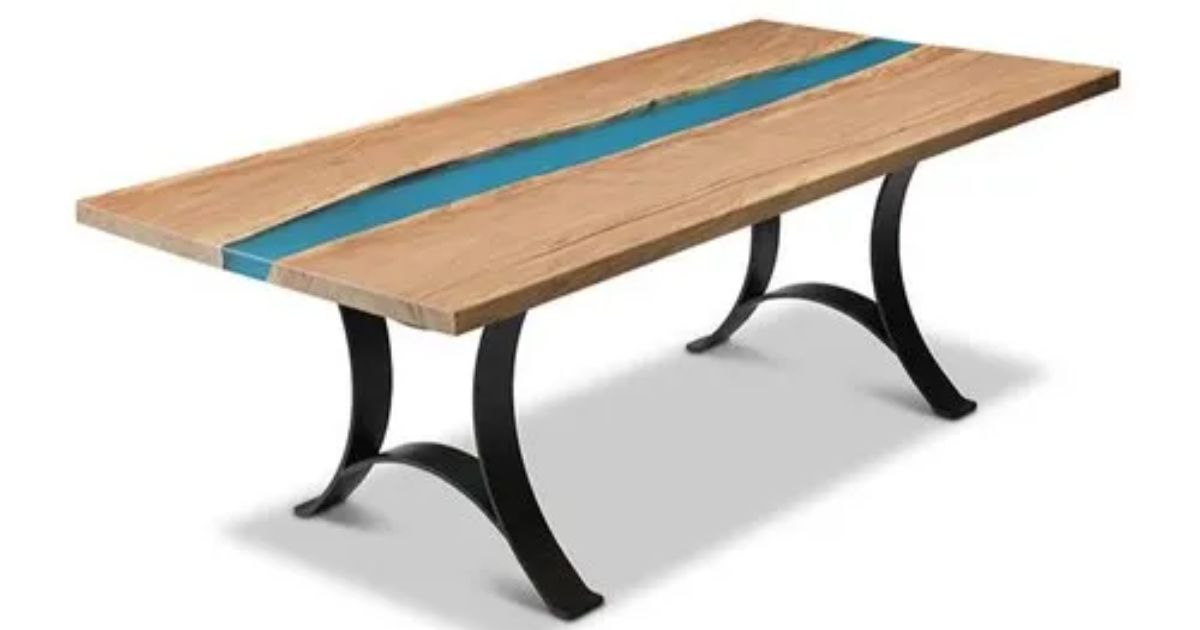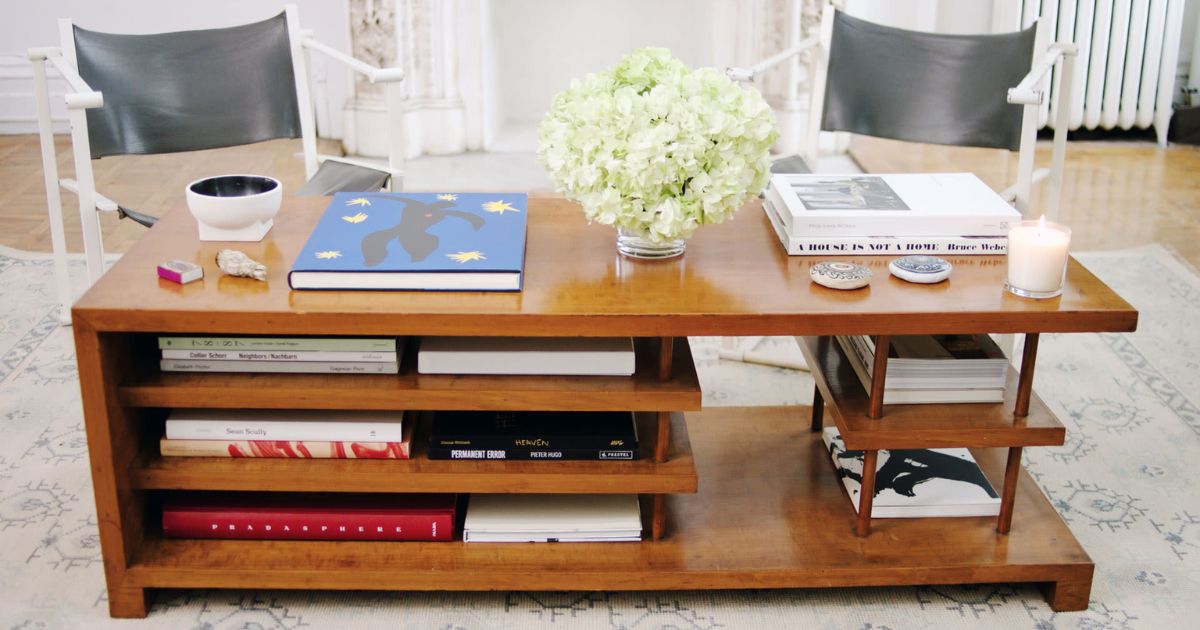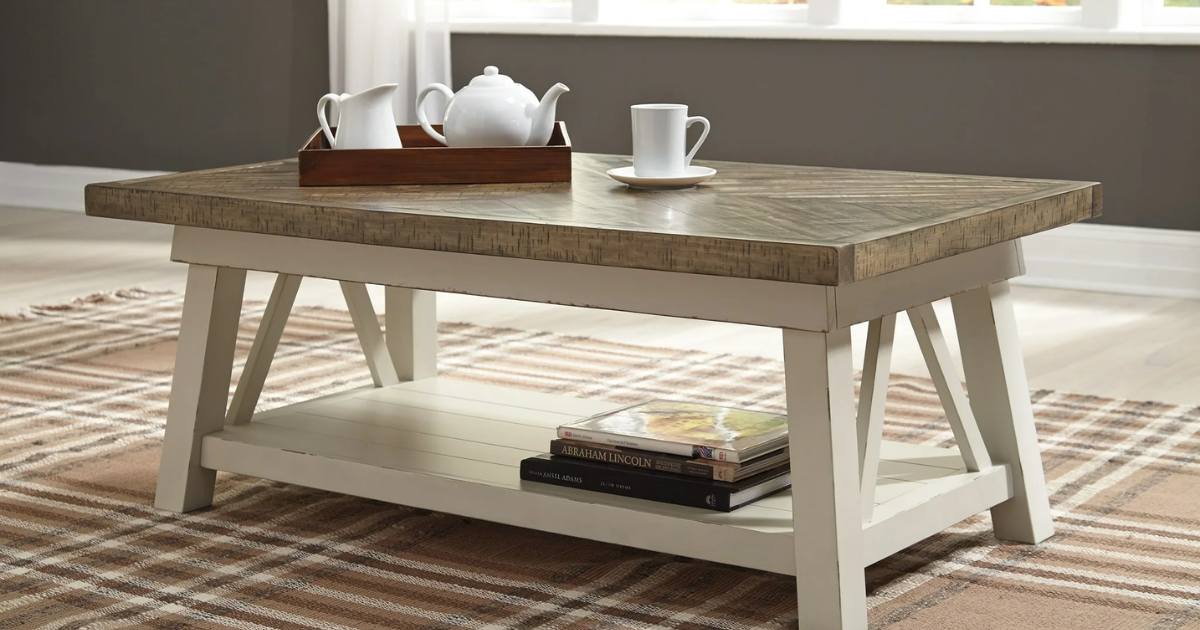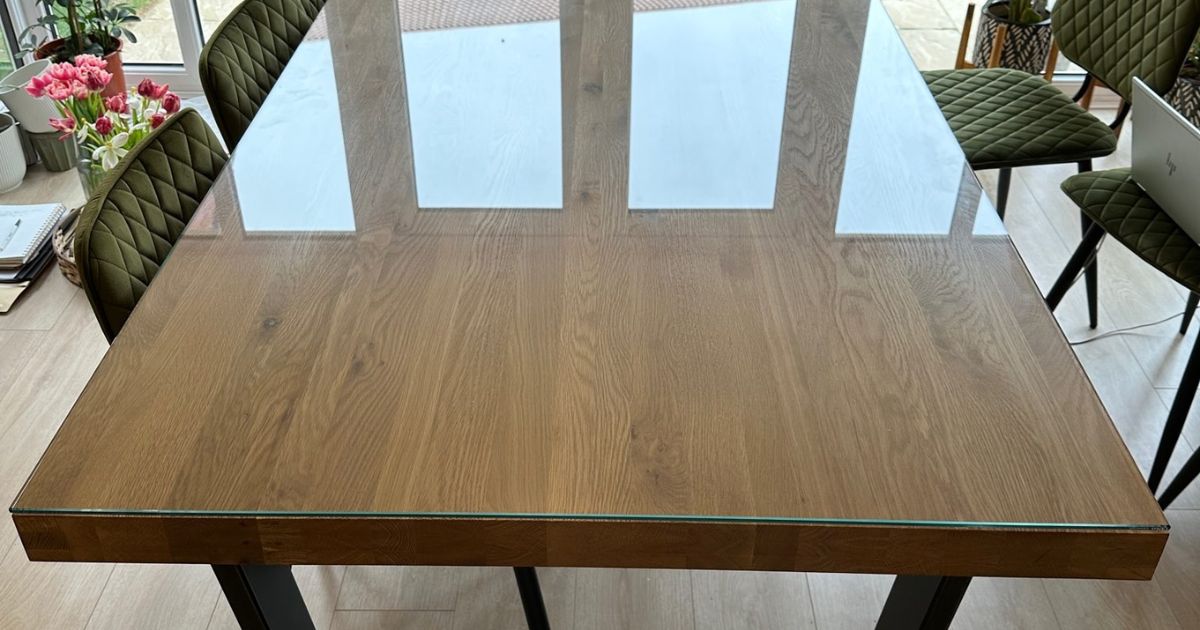Did you know that the thickness of a coffee table top plays a crucial role in its durability and functionality? In this article, we will explore the factors to consider when determining the optimal thickness for your coffee table top.
From the importance of wood type to the impact of style and design, we will delve into the technical details and provide expert guidance. Join us as we uncover the secrets to choosing the perfect thickness for your coffee table top.
Key Takeaways
- Design style, such as minimalist, modern, or rustic, influences the recommended thickness of a coffee table top.
- Proportion and visual balance should be considered when choosing the thickness of a coffee table top, especially for larger tables.
- Thicker table tops provide increased stability, durability, and aesthetic appeal, but they may be heavier and require stronger support structures.
- The optimal thickness of a coffee table top depends on the style, usage, material, personal preference, and anticipated load-bearing capacity, and consulting with a furniture expert can help make an informed decision.
Factors to Consider When Determining Coffee Table Top Thickness

When determining the thickness of a coffee table top, there are several important factors to consider. The first factor is the material of the table top. Different materials have different structural properties and require different thicknesses for stability. For example, solid wood tops are typically thicker than glass or metal tops.
The weight and load-bearing capacity of the table is another crucial factor. If the table is intended to hold heavy objects or withstand frequent use, a thicker top is necessary to ensure durability. The overall design and style of the table should be taken into account.
A thicker top may be preferred for a more substantial and robust look, while a thinner top can create a sleek and minimalist aesthetic. Ultimately, the thickness of a coffee table top should be determined by a combination of these factors to achieve the desired functionality and visual appeal.
The Importance of Wood Type in Coffee Table Top Thickness
The choice of wood type for a coffee table top is crucial when determining its thickness. Different wood types have varying levels of durability and strength, which directly impact the required thickness for the table top.
The wood type also plays a significant role in the overall aesthetic appeal of the coffee table, as different woods have distinct grain patterns and colors. Lastly, the weight of the wood type should be taken into consideration, as heavier woods may require a thicker table top to ensure stability and prevent sagging.
Wood Type Affects Thickness
Typically, the choice of wood type greatly influences the appropriate thickness for a coffee table top. Different wood types have varying levels of strength and durability, which directly impact the required thickness to support the weight and withstand daily use. Here are four key considerations regarding wood type and its effect on coffee table top thickness:
- Hardwood: Dense hardwoods like oak and maple have high structural integrity, allowing for thinner table tops without sacrificing strength.
- Softwood: Softer woods like pine and cedar are less dense and may require a thicker table top to ensure stability and prevent warping or cracking.
- Exotic wood: Unique wood species, such as teak or mahogany, have their own specific characteristics. These woods often possess natural resistance to moisture and decay, allowing for a thinner table top.
- Engineered wood: Man-made materials like plywood or particleboard can offer a cost-effective alternative. Due to their composition, they typically require a thicker table top to maintain stability and prevent sagging.
Durability and Aesthetics
Different wood types contribute to both the durability and aesthetics of a coffee table top, making the choice of wood type crucial in determining the appropriate thickness. The type of wood used affects the strength and longevity of the coffee table top, as well as its overall appearance.
Some woods, such as oak and maple, are known for their durability and ability to withstand daily use. On the other hand, softer woods like pine or fir may be more prone to dents and scratches. The wood type can greatly impact the visual appeal of the coffee table top, with different grains, colors, and textures offering unique aesthetics. Consider the following table showcasing the characteristics of various popular wood types:
| Wood Type | Durability | Aesthetics |
|---|---|---|
| Oak | High | Classic |
| Maple | High | Modern |
| Pine | Medium | Rustic |
| Fir | Low | Vintage |
Understanding the durability and aesthetics of different wood types allows for a more informed decision when selecting the appropriate thickness for a coffee table top. In considering the weight of the table top, another important factor comes into play.
Consideration for Weight
When determining the appropriate thickness for a coffee table top, it is essential to consider both the weight of the table and the type of wood used. The weight of the table is directly influenced by the thickness of the top, as a thicker top will add more weight to the overall structure. The type of wood used also plays a significant role in determining the appropriate thickness. Here are some considerations for weight and wood type in coffee table top thickness:
- Dense hardwoods such as oak or mahogany can withstand more weight and pressure, allowing for a thinner table top.
- Softwoods like pine or cedar may require a thicker top to ensure stability and prevent sagging.
- Exotic woods with unique characteristics may require a specific thickness to showcase their beauty and maintain structural integrity.
- Considering the weight of any additional features or accessories, such as drawers or shelves, is crucial in determining the appropriate thickness for the coffee table top.
How Style and Design Impact Coffee Table Top Thickness

When considering the thickness of a coffee table top, one must take into account the impact of style and design, especially when looking at a Coffee table Calla 3cm thick. While functionality is important, the style and design elements of a coffee table can greatly influence the desired thickness.
Different styles and designs may require a thicker or thinner top to achieve the desired aesthetic appeal. Design considerations such as the overall size, shape, and materials used in the table will also play a role in determining the appropriate thickness for the coffee table top..
Style Vs. Functionality
An optimal coffee table top thickness is crucial for striking the right balance between style and functionality. When considering the thickness of a coffee table top, it is important to take into account the overall design and style of the table, as well as its intended use and the materials used in its construction. Here are four key points to consider:
- Style: A thinner coffee table top, typically around 1 inch, can create a sleek and modern look, perfect for contemporary or minimalistic decor styles.
- Durability: For a more durable option, a thicker coffee table top, around 1.5 to 2 inches, is recommended. This ensures that the table can withstand heavy objects and constant use without sagging or warping.
- Weight: Thicker table tops tend to be heavier, which can make moving or rearranging the table more difficult.
- Cost: Thicker table tops often require more materials, leading to a higher cost.
Considering these factors, it is important to find the right balance between style and functionality when determining the thickness of a coffee table top. Transitioning into the next section, we will now explore the design considerations that should be taken into account when choosing a coffee table top thickness.
Design Considerations
As style and design play a significant role in the overall aesthetics of a coffee table, it is important to consider how they impact the thickness of the table top. The design of a coffee table can vary greatly, from minimalist and modern to rustic and traditional.
Each design style has its own unique characteristics and influences the choice of table top thickness. For example, a minimalist design typically features clean lines and a sleek appearance, which may be complemented by a thinner table top to maintain a sense of lightness.
On the other hand, a rustic design often incorporates natural materials and a more substantial look, which may call for a thicker table top to enhance its visual appeal and durability. The following table illustrates how different design styles can influence the recommended thickness of a coffee table top:
| Design Style | Recommended Thickness |
|---|---|
| Minimalist | 0.5-0.75 inches |
| Modern | 0.75-1 inch |
| Rustic | 1-1.5 inches |
The Relationship Between Table Size and Top Thickness

How does table size influence the ideal thickness of a coffee table top? When determining the appropriate size coffee table for an 84-inch space, the relationship between table size and top thickness is an important consideration. Here are four factors to keep in mind:
- Proportion: A larger coffee table generally requires a thicker top to maintain visual balance and prevent it from looking too flimsy in comparison to its size.
- Stability: A larger table with a thin top may be prone to sagging or warping over time. A thicker top adds structural support and ensures the table remains stable and durable.
- Weight distribution: A larger table is likely to bear more weight from objects placed on it. A thicker top can better distribute the weight, preventing any potential damage or deformation.
- Aesthetic appeal: The thickness of the coffee table top can also contribute to its overall aesthetic. A thicker top can create a more substantial and luxurious appearance, enhancing the visual appeal of the table.
Considering these factors will help you determine the ideal thickness for your coffee table top based on its size, ensuring both functionality and aesthetic appeal.
Is Thicker Always Better? Exploring the Pros and Cons
While thicker coffee table tops offer certain advantages, there are also potential drawbacks to consider, making it important to explore the pros and cons before making a decision. Thicker table tops provide increased stability and durability, which is especially beneficial for heavy or frequently used coffee tables.
A thicker top can also create a more substantial and visually appealing aesthetic, adding a sense of luxury and sophistication to the overall design. It is important to note that thicker table tops can be heavier and more difficult to move or rearrange.
They may require stronger support structures, which can increase the cost and complexity of construction. Ultimately, the decision on the thickness of a coffee table top should be based on a careful consideration of the specific requirements and preferences of the individual.
How to Choose the Optimal Thickness for Your Coffee Table Top

To ensure the best fit for your coffee table, consider various factors such as style, usage, and material when selecting the optimal thickness for its top. Here are some guidelines to help you choose the right thickness:
- Style: For a modern and sleek look, a thinner coffee table top, around 0.25 inches, can be a great choice. On the other hand, if you prefer a more traditional or rustic style, a thicker top, around 1 inch or more, can add a sense of solidity and durability.
- Usage: If your coffee table will be used for heavy-duty activities like holding large items or supporting weight, a thicker top is recommended to ensure stability and prevent sagging.
- Material: Different materials have different thickness requirements. For example, glass tops are typically thinner, around 0.25 to 0.5 inches, while solid wood tops can be thicker, ranging from 0.75 to 1.5 inches or more.
- Personal preference: Ultimately, the optimal thickness is subjective and depends on your personal taste and the overall aesthetic you want to achieve in your space.
Consider these factors and consult with a furniture expert to make an informed decision about the optimal thickness for your coffee table top.
Understanding Load-Bearing Capacity and Its Influence on Top Thickness
The load-bearing capacity of a coffee table top significantly influences its optimal thickness and overall structural integrity. Understanding this capacity is crucial in determining the appropriate thickness for your coffee table top. Load-bearing capacity refers to the maximum weight or load that a coffee table top can support without compromising its stability and functionality.
It depends on various factors such as the type of materials used, the construction method, and the intended use of the table. To ensure the coffee table top can bear the desired weight, it is essential to consider the size and weight of the objects that will be placed on it regularly.
Generally, thicker table tops have higher load-bearing capacities, as they offer greater resistance to bending and sagging. However, it is important to strike a balance between thickness and aesthetics to create a visually appealing coffee table that can withstand the anticipated load.
Balancing Aesthetics and Practicality in Coffee Table Top Thickness
In order to achieve a harmonious blend of aesthetics and practicality, it is important to strike a balance between the thickness of a coffee table top and its overall visual appeal. Finding the right thickness can enhance the table’s functionality while still maintaining its attractiveness. Here are four key considerations when balancing aesthetics and practicality in coffee table top thickness:
- Stability: A thicker table top provides increased stability, ensuring that the table can withstand the weight of objects placed on it without wobbling or tipping over.
- Proportion: The thickness of the table top should be proportional to the size of the table itself. A thin table top on a large table may appear fragile, while a thick top on a small table may look bulky and out of proportion.
- Visual Weight: The thickness of the table top contributes to its visual weight. A thinner top can create a lighter, more delicate appearance, while a thicker top adds a sense of solidity and presence.
- Material: The choice of material for the table top also impacts its thickness. Different materials have varying structural properties, which should be considered when determining the ideal thickness for both aesthetics and practicality.
Tips for Maintaining and Protecting Coffee Table Tops of Different Thicknesses

- Regular cleaning and dusting are essential for maintaining the quality and longevity of coffee table tops, regardless of their thickness. However, when it comes to different thicknesses, there are some additional tips that can help protect and maintain coffee table tops effectively.
- For thinner coffee table tops, which are typically made of materials like glass or acrylic, it is important to avoid placing heavy or sharp objects directly on the surface. Using coasters or placemats can provide an extra layer of protection against scratches and spills. Using a soft cloth or sponge with mild soap and water for regular cleaning can help prevent the accumulation of dirt and grime.
- Thicker coffee table tops, such as those made of wood or stone, require special care to maintain their beauty and durability. It is recommended to use protective pads or mats under hot objects to avoid heat damage. Regular polishing or waxing can help preserve the natural shine and finish of the wood or stone. Avoid using harsh cleaners or abrasive materials that can cause scratches or discoloration.
- Regardless of the thickness, it is important to address any spills or stains promptly. Blotting the affected area with a clean cloth and using a gentle cleaning solution can help prevent permanent damage. It is also advisable to avoid direct exposure to sunlight or extreme temperature changes, as these can cause warping or fading.
FAQ’s
Can Glass Be Used as a Coffee Table Top Material, and if So, How Does It Affect the Thickness Requirements?
Glass can be used as a coffee table top material. When using glass, the thickness requirements are influenced by factors such as the size and weight of the table, the intended use, and safety considerations.
What Are the Potential Drawbacks of Having a Coffee Table Top That Is Too Thick?
Having a coffee table top that is too thick can lead to potential drawbacks such as increased weight, difficulty in moving or transporting the table, and a less aesthetically pleasing appearance.
Are There Any Specific Guidelines for Determining the Appropriate Thickness for a Coffee Table Top Made of Metal?
Determining the appropriate thickness for a coffee table top made of metal can depend on several factors, including the desired aesthetic, the weight-bearing capacity, and the structural integrity required. It is important to consider these factors when selecting the thickness for a metal coffee table top.
Does the Weight of the Coffee Table Itself Impact the Ideal Thickness of the Table Top?
The weight of a coffee table does impact the ideal thickness of the table top. A heavier table requires a thicker top to ensure structural integrity and prevent sagging. Factors such as material and support also play a role in determining the appropriate thickness.
Are There Any Additional Factors to Consider When Determining the Thickness of a Coffee Table Top for Outdoor Use?
When determining the thickness of a coffee table top for outdoor use, there are several additional factors to consider. These include exposure to the elements, potential impact or weight-bearing requirements, and the type of material used for the tabletop.
Conclusion
In conclusion, determining the optimal thickness for a coffee table top involves considering various factors such as wood type, style and design, table size, load-bearing capacity, and balancing aesthetics with practicality.
While thicker tops may offer more durability and sturdiness, there are also potential drawbacks to consider. It is essential to carefully evaluate these factors and choose a thickness that suits your specific needs and preferences. By doing so, you can ensure a functional and visually appealing coffee table that enhances your living space.








